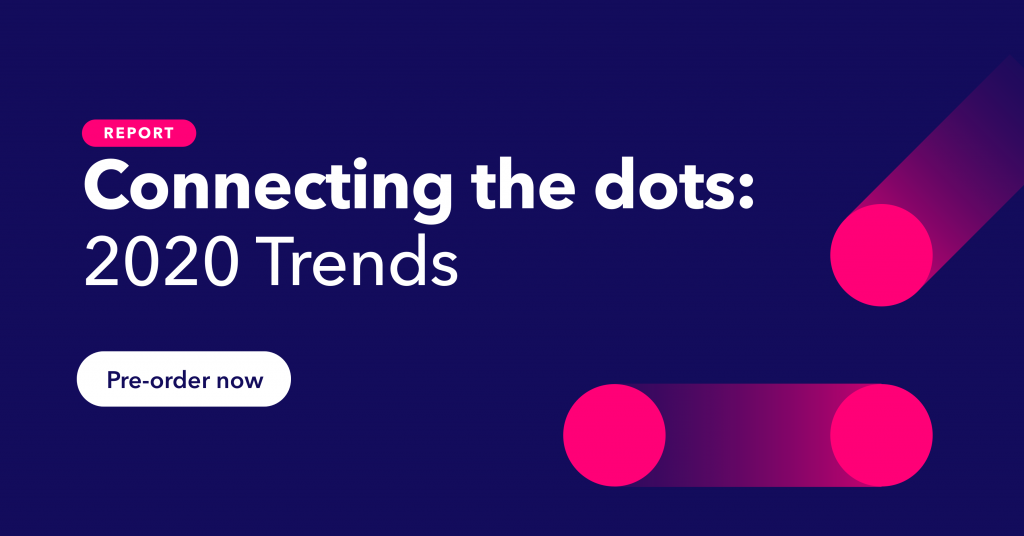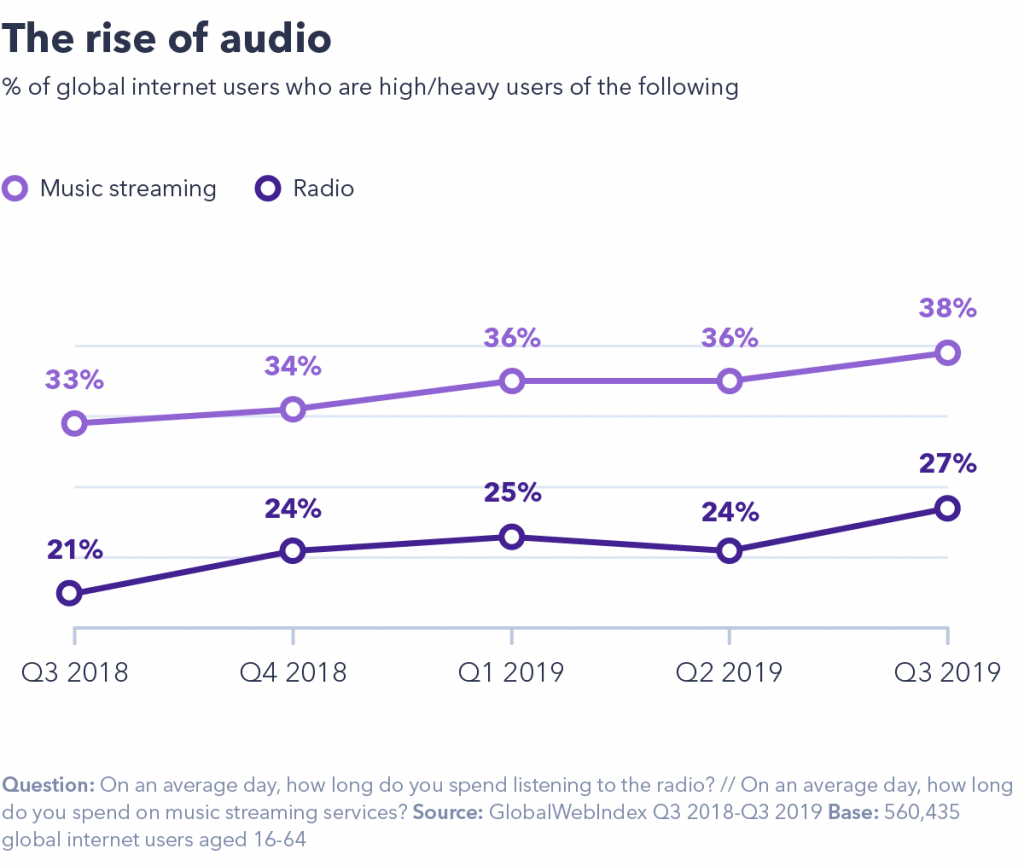As we sit down to plan for the new year, it’s natural to take stock of the year that’s passed.
The virtue of having such a large data set at our fingertips is that it can throw up some more surprising truthstrends from the year; trends that may have slipped under your radar.
So we’ve crunched the numbers from the last 12 months to highlight those that might have escaped your notice.
1. More people are hitting the gym.
One hallmark of the New Year is seeing the gyms fill up anew with budding fitness fanatics. But in 2019, the gyms are likely to be even busier than previous years.
Our research shows just what an upsurge in popularity going to the gym has had in the past year.
There’s no single factor behind this trend; it seems to be the product of many. More women are attending gyms, but the gender balance of gym-goers is roughly what it was this time last year.
There’s been uplift among all generation groups too. Budget gyms sometimes take the credit for democratizing fitness, but our data shows good growth among all income segments.
There aren’t any particular geographic regions that seem to be behind it, either. Ownership of wearable devices is growing sharply, but that only accounts for a minority of gym-goers.
We can, however, shed some light on this trend from other parts of our data set.
When we analyze personal interests, we can see that interest in fitness and exercise has actually decreased in the past year, even as more people hit the gym.
On the other hand, interest in personal healthcare has grown. It may be that gyms are going through a perception shift, moving from specialized fitness spaces, into another part of consumers’ increasingly holistic view of their overall health.
Gyms may be a place to maintain day-to-day health, as well as somewhere to get fit in the traditional sense.
As gym attendance has grown, it’s created knock-on trends of its own. For one thing, gyms can be a great location for out-of-home advertising. For another, gyms are a place where internet users can enjoy their favorite content – without needing a screen.
2. Audio is exploding.
The media landscape is ultimately a battle for attention, and each year consumers are saturated by more and more content.
So the biggest growth for sheer time spent in the last year has come from audio formats, as consumers have more free time in their day to listen than to watch. We can see this from last year’s data, as the number of high or heavy users of radio and music streaming has risen sharply, more so than visual types of media.
This is in addition to a great year for podcasts:
41% of global internet users listened to podcasts in our last wave of data, compared to 37% this time last year.
Spotify has grabbed the headlines with its investment in podcast companies, but it’s a format making waves across virtually all markets we track. The bottom line, for marketers at least, is that audio formats deserve serious attention in the coming years.
3. Vlogs are playing a bigger role in the purchase journey.
Does the growth in audio mean screens are losing their impact? Far from it. One particular format is starting to show even more promise as a marketing tool.
Since we started tracking vlogs in the purchase journey they’ve shown modest growth year-on-year, but have remained one of the more niche channels. In the last year, though, we’ve seen a real spike for using vlogs to either discover brands, or to find more information about them and their products.
While it remains a more specialist channel, it’s breathing down the neck of more established discovery sources, as it now rivals cinema and radio ads globally for importance in the purchase journey.
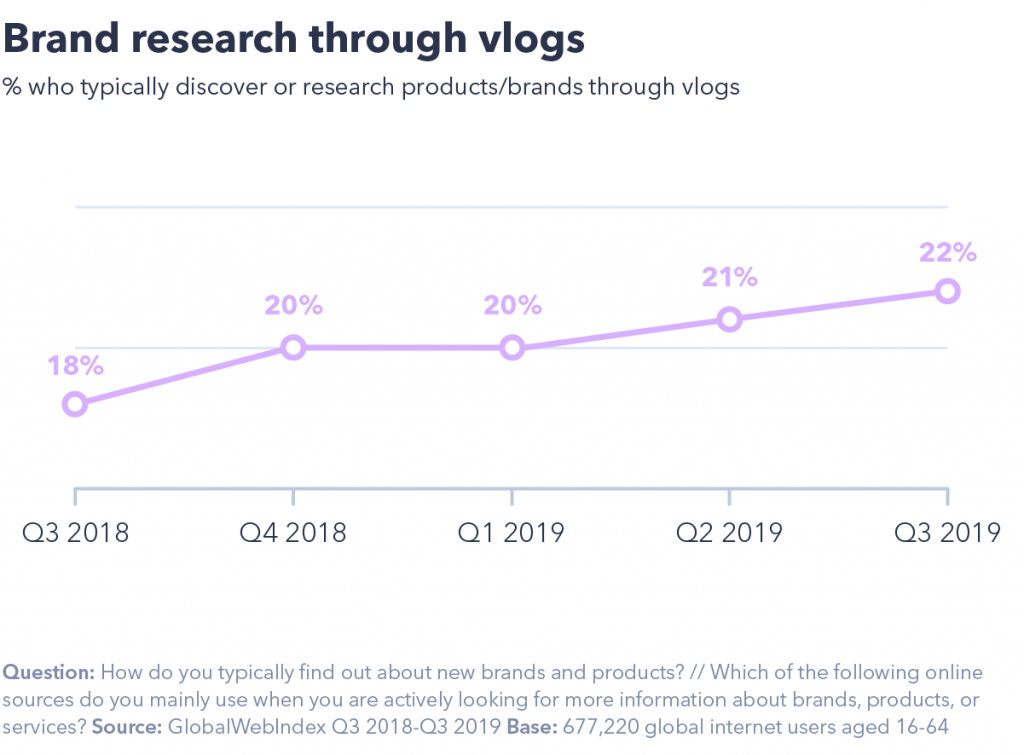
As with many trends, it’s China that’s paved the way. In the past few years, entertainment and ecommerce in the country have merged more and more, with a host of the country’s social platforms embracing livestreaming as a way to connect influencers (known in China as “key opinion leaders”) with their audience, with layers of commerce on top.
One slight caveat with this trend is that it remains the preserve of Gen Z and millennials, and vlogs are still yet to penetrate much with older age groups. But for those younger users, vlogs are now a well-established tool to discover and research products.
In previous years there may have been more issues in integrating brands with video creators, but it seems like consumers have accepted it as the status quo. Finding the right brand-creator match will be as important as ever, though.
4. Despite environmental concerns, long-haul travel is growing rapidly.
On the subject of influence, arguably 2019’s most influential person was climate activist Greta Thunberg; TIME Magazine saw fit to award her Person of the Year.
Her efforts last year to draw attention to the issue – from crossing the Atlantic by boat, to criss-crossing Europe by train – have brought the idea of flygskam, or “flying shame”, into view.
But despite these headlines, the aviation market seems to have been largely unaffected, and internet users are actually taking more long-haul trips. The growth in Asia Pacific has been particularly explosive.
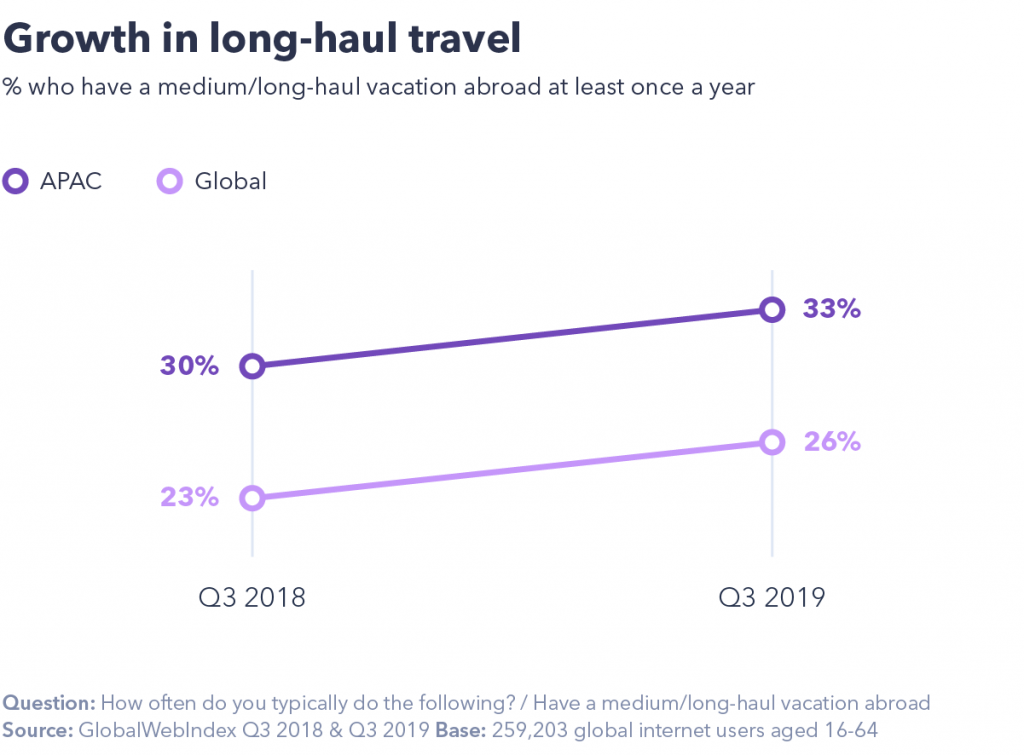
In India, for example, the number of internet users who take long-haul trips at least once a year has risen from 41% in Q3 2018 to 51% in Q3 2019. While we ask about long-haul trips (as opposed to flights specifically), it’s safe to assume most of this growth has come from aviation, as our findings match the predictions from the International Air Travel Association.
We know from our latest research into corporate social responsibility that consumers are taking more interest in the environmental impact of purchases they make, and it’s fair to say that legislative pressure is likely to grow.
But while consumers want environmentally friendly products and services, they also want to travel and experience distant parts of the world.
How the market manages these colliding wishes probably makes this the hardest trend of our six to predict accurately, but for the moment it looks like consumers are yet to vote with their wallets.
5. Telegram has come to the fore in emerging markets.
If you asked most people what last year’s social media breakout success story was, they’d probably say TikTok. But in the fast-growth markets we track, there’s another social platform on the up to take note of – and that’s Telegram.
Use of messenger app, Telegram, has grown globally, but particularly so in the Middle East and Africa, where usage has grown 118% since last year, a growth rate outstripping any other messaging service. It’s now only slightly less popular than Snapchat or LinkedIn in the region.
In MEA, it’s actually more popular than Pinterest, and even the much-feted TikTok.
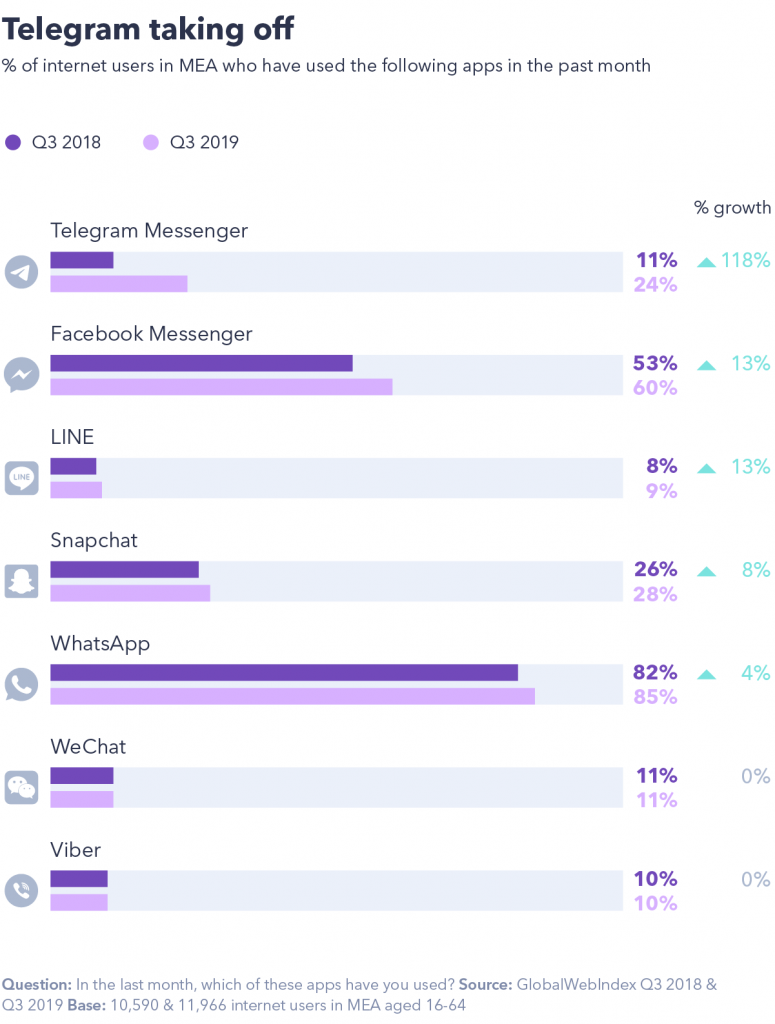
At the same time, Telegram has expanded beyond just messaging, with journalists and businesses now providing it with more use-cases than just peer-to-peer messaging. It’s not one of our tracked markets, but reports have shown that Telegram has become one of the most popular internet portals in Uzbekistan, becoming a hub for news, business orders and even government messages.
We can get a measure of Telegram’s importance to its users by looking at their motivations for using the internet and social media full stop. In general, Telegram users over-index for business-related networking, which suggests a good deal of potential in any further enterprise functionalities.
6. Internet users are hanging onto their phones for longer.
As we’ve seen so far, emerging markets are often hubs of technology innovation among consumers, as online services can address underlying social and economic issues.
But there are cases where mature Western markets lead a global trend, and that’s what’s happening to the smartphone ownership cycle.
The smartphone market’s travails last year have been widely reported, with widespread reports of contraction in the market.
We can contextualise that with our global data, which shows the changes at a consumer level. Mobile phones have moved from an annual upgrade into something bought less frequently.
In the U.S., this change has been particularly acute. Last year, 53% of smartphone owners had owned their current handset for more than a year; this year, it’s 59%.
There are some markets bucking the trend, but the same story generally holds in most of our tracked markets.
There’s much innovation still in the pipeline, with AR, 5G, and foldable screens all in line to tempt users to upgrade. It may be the case that the market bounces back in 2020. But there’s every chance that the smartphone market has fundamentally changed.
